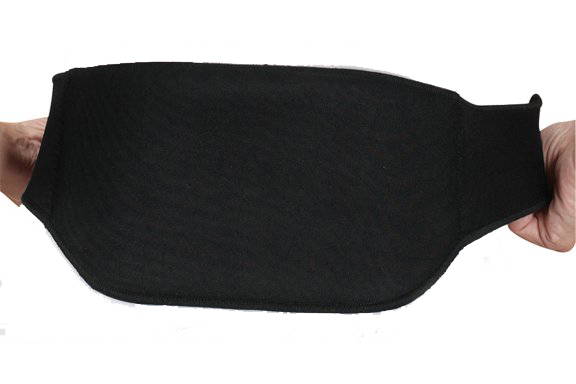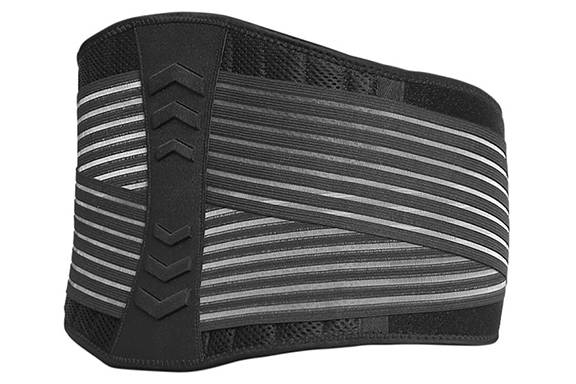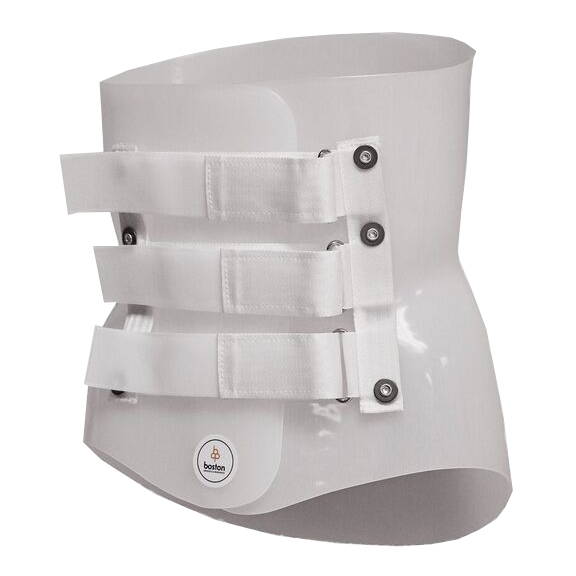Much of our back pain can be attributed to weak core muscles, poor posture habits resulting in undue stress on the spinal column, and/or lack of flexibility. Thankfully, a back brace can help relieve some of the discomforts by providing support for weakened muscles and helping you maintain good posture.

Flexible braces work by applying compression to the tense muscles and soft tissues of the lower back, which can help improve circulation and reduce inflammation. The compression also helps stabilize the spine and prevent excessive movement or twisting, which can be beneficial for people with lower back pain or injuries.
Unlike rigid back braces, which are designed to limit motion and provide maximum support, flexible braces allow for a degree of flexibility and movement. This can be beneficial for people who have:

A rigid brace combines elements of hard plastic, metal bars, and sometimes even steel springs to offer additional support. While semi rigid braces are typically made of a combination of rigid and flexible materials, they both provide significant support for the lower back region.
Rigid back braces are typically recommended for people who have experienced severe back injuries or those with chronic conditions such as :
Check out the Koprez® Back Support Brace for a great example of a rigid back brace. It features adjustable velcro straps, rigid panels, and breathable fabric for maximum lumbar support and comfort

Often used by those with significant spine curvature issues, these braces are tailored to an individual's back, helping correct posture. Custom-molded braces are typically more expensive than other types but can be very effective for people with scoliosis or other severe spinal deformities.
Often prescribed as a back brace for scoliosis, these braces use specialized materials that conform to the curve of the spine, providing a snug fit and maximum support. Custom-molded braces are typically more expensive than other types but can be very effective for people with scoliosis or other severe spinal deformities.
Often prescribed as a back brace for scoliosis, these braces use specialized materials that conform to the curve of the spine, providing a snug fit and maximum support. Custom-molded braces are typically more expensive than other types but can be very effective for people with scoliosis or other severe spinal deformities.
In addition to the above, there are also more types of medical back braces designed to provide relief from pain and help prevent certain conditions from worsening. These include:
Lumbar sacral orthosis (LSO) braces: Designed to stabilize the lower spine and pelvic region, these braces often feature a wide belt that encircles the lower torso. They are commonly used for people with spinal deformities such as scoliosis or lordosis.
Cervical collars: Also known as neck braces, these devices provide support for the neck and head and help keep the cervical vertebrae in a neutral position. They are often used to treat whiplash or other neck injuries.
Thoracic lumbar sacral orthoses (TLSOs): These back supports apply pressure through rigid metal rods or plates to keep the spine in a neutral position. They are often used for severe spinal deformities or after surgery to stabilize the spine while it heals.
Whether you’re looking to improve posture, relieve pain from a herniated disc, or even get through a day at work without upper back pain, wearing a back brace has its benefits:
Especially for those with poor posture habits, braces aid in correcting posture, ensuring the spinal column remains in its natural curve.
For chronic pain, especially lower back pain, wearing a back brace can be a game-changer. It provides lumbar support, reduces the excess train on weakened joints and muscles, and provides immediate pain relief from conditions like herniated discs.
For conditions like adolescent scoliosis or after a heavy lifting injury, a back brace ensures the proper alignment of the spine. It also provides the additional support needed, reducing pain and aiding recovery.
Wearing a back brace can help prevent back injuries, particularly during activities that place a significant strain on the back, such as heavy lifting or intense physical activity. A back brace can provide additional support to the spine and reduce the risk of muscle strains and sprains, which can help prevent back injuries.
In cases where an individual has suffered a back injury, wearing a back brace can help promote healing. Back braces can provide additional support to the spine, which can help reduce pressure on the injured area and promote healing. By reducing the risk of further injury, a back brace can also help prevent complications that can delay healing.
Back braces can help improve mobility for individuals who have experienced back injuries or have chronic back pain. By providing additional support to the spine, a back brace can help alleviate pain and increase mobility, allowing individuals to participate in activities that they may have previously avoided due to their back pain.
Wearing a back brace is a non-invasive treatment option for back pain and injuries. Unlike medication or surgery, wearing a back brace does not involve any invasive procedures or potential side effects. Additionally, back braces can be worn for extended periods, making them a convenient and cost-effective treatment option.
When it comes to managing back pain and preventing further injury, choosing the right back brace is essential. There are many types of braces available that can provide varying levels of support depending on your individual needs.
Here are some tips to help you understand your options and make an informed decision when selecting a back brace.
Before purchasing, it’s essential to consult with a medical professional or a physical therapist. They can guide you on how to wear the brace properly and which one might be the best fit, especially if you require it for specific conditions like degenerative disc disease or spinal stenosis. Always ensure that the brace fits snugly, offers the support you need, and is made of breathable fabric for comfort.
In conclusion, whether it’s upper back pain from sitting too long, neck pain from poor posture, or chronic pain from a weakened joint, the right back brace, when combined with physical therapy, can be a game-changer. Remember to wear it correctly and consult healthcare professionals to ensure you're making the right choice.